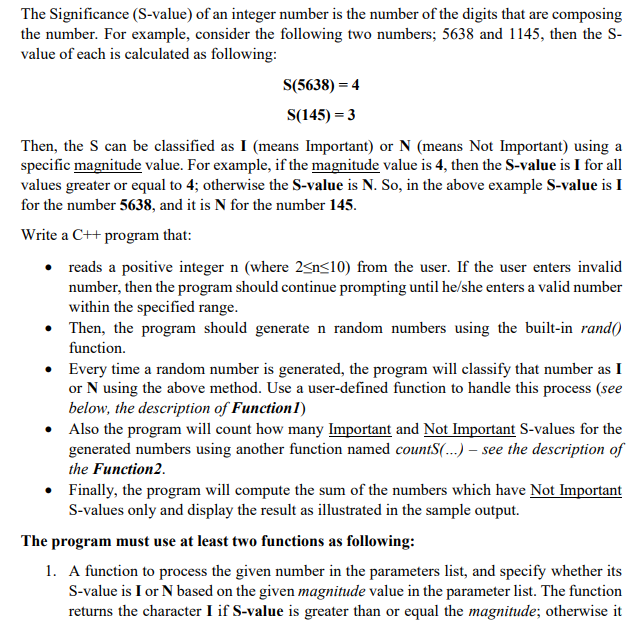The Significance (S-value) of an integer number is the number of the digits that are composing the number. For example, consider the following two numbers; 5638 and 1145, then the S- value of each is calculated as following: S(5638) = 4 S(145) = 3 Then, the S can be classified as I (means Important) or N (means Not Important) using a specific magnitude value. For example, if the magnitude value is 4, then the S-value is I for all values greater or equal to 4; otherwise the S-value is N. So, in the above example S-value is I for the number 5638, and it is N for the number 145. Write a C++ program that: reads a positive integer n (where 2
Control structures
Control structures are block of statements that analyze the value of variables and determine the flow of execution based on those values. When a program is running, the CPU executes the code line by line. After sometime, the program reaches the point where it has to make a decision on whether it has to go to another part of the code or repeat execution of certain part of the code. These results affect the flow of the program's code and these are called control structures.
Switch Statement
The switch statement is a key feature that is used by the programmers a lot in the world of programming and coding, as well as in information technology in general. The switch statement is a selection control mechanism that allows the variable value to change the order of the individual statements in the software execution via search.


Step by step
Solved in 4 steps with 2 images


